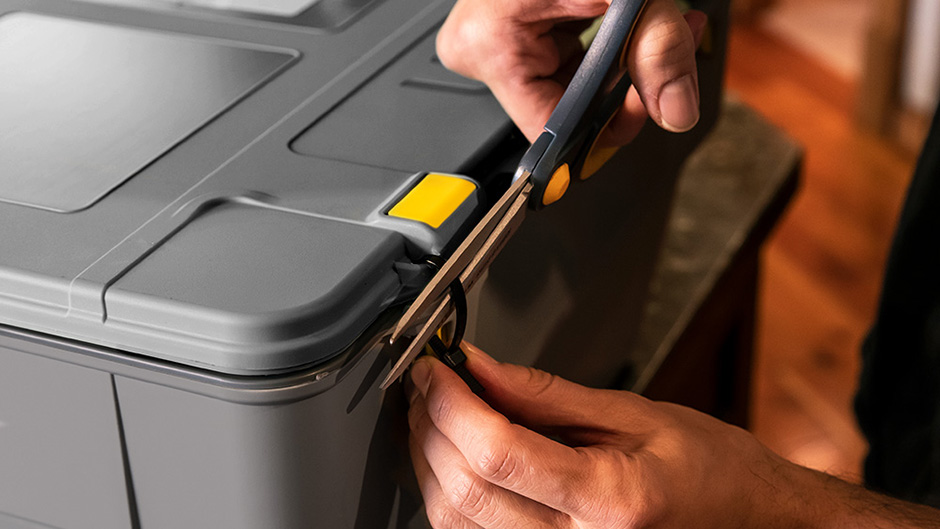As homebound humans grapple with the realities of coronavirus in their lives, ecommerce grocery businesses are busy doing the same due to a jarring spike in pickup and delivery demand during the global pandemic.
The numbers paint a striking picture of seismic shifts in velocity and volume.
Online grocery sales grew more than 24% to a record-setting $6.6 billion, compared to April’s $5.3 billion. And this growth is driven by an 18% increase in the total number of orders in the past 30 days (73.5M in May vs. 62.5M in April) and higher spending per order ($90 in May vs. $85 in April), according to the latest research from Brick Meets Click.
For many Americans this forage-from-home reliance is entirely new territory. A survey by research firm Business Insider Intelligence (BII) found that 42% of adults that bought groceries online or for pickup in the past few weeks were first-timers. BII projects that the percentage of US consumers who have used online grocery services will hit 43% by the end of June and rise to 49% by year’s end.
GIG GOES GANGBUSTERS
The grocery and delivery pickup boom has left major e-retailers scrambling. Instacart is a prime example of a direct-to-consumer company now clocking extra miles, with extra hands on deck, to help it return to “one-hour and same-day delivery.”
In order to get there, Instacart in June struck a deal with America’s largest wholesale grocery supply company, C&S Wholesale Grocer. This partnership brings the e-commerce and same-day deliverer to more than 3,000 independent C&S-affiliated grocers.
And it’s a similar move-fast and make-way story at retail behemoth Walmart. The world’s largest private employer recently rolled out its new Express Delivery
in the wake of the coronavirus pandemic. Express Delivery, notes Walmart, allows customers “to order across more than 160,000 items from Walmart’s food, consumables and general merchandise assortment such as groceries, everyday essentials, toys and electronics.”
In the workforce expansions department, Amazon is feeling the heat too. And even with up to 175,000 additional people trying to get goods from Amazon to its shoppers, the company is seeking patience from its customers.
Amazon Fresh and Whole Foods Market went so far as to ask new customers to sign up for an invitation to use online grocery delivery and pickup, while the companies worked to increase capacity back in April. Since then Amazon has grown Whole Foods online order capacity by more than 60 percent and, according to a May 13 blog post, it has “…removed the invite list in many cities, and more than 80% of eligible Prime members are [now] able to shop without requesting an invitation.”
SCALING FOR THE POST-PANDEMIC LONG-TERM
Beyond sorting through literally millions of resumes, e-commerce companies facing stiff competition in the grocery business are turning to micro-fulfillment technology to help boost capabilities.
“With the potential to fill orders faster than the traditional store-pick model while taking up minimal square footage,” Grocery Dive notes, “micro-fulfillment centers (MFCs) have emerged as a popular solution for retailers looking to hit back against the challenging economics of e-commerce.”
And looking ahead, some stores will inevitably follow the lead of Walmart and Target to turn parts of their operations into MFCs. This makes sense considering that if/when coronavirus subsides, shoppers who have experienced delivery, curbside pickup and e-commerce in general will likely adopt at least some of those habits for the long-term.
According to a Forbes article on post-coronavirus retail, “Allowing customers to enter only part of the store or pulling inventory off the shelf for deliveries expands how stores can reach out and serve customers without decreasing the experience for customers who prefer to shop in store. For other brands, full-time dark stores will become the new way of doing business. But it won’t come without challenges and adjustments.”
With the ability to lower labor costs and increase fulfillment efficiencies robots and automation will continue to drive adjustments in e-commerce grocery as we embrace a new normal in the foreground.
Automated MFCs from Takeoff only require a few people to run, while robots tackle the majority of the heavy-lifting when fulfilling orders. Takeoff’s grocery fulfillment solution integrates into a grocer’s existing business, providing added flexibility and scalability. Additionally, in a world where cleanliness has become king, this means limited contact with grocery items. Taking that notion a leap further, MFCs can also be built in dedicated areas of supermarkets, away from shoppers on the store floor.
“It is probably one of the safest ways to fulfill grocery orders in the current climate,” says Takeoff’s founder and CEO, José Vicente Aguerrevere.
Beyond this current climate, we see more automation in the crystal ball as the grocery world deals with increasing volume from a consumer base that’s taking grocery delivery and pickup from trial run to new traditions in the making.

